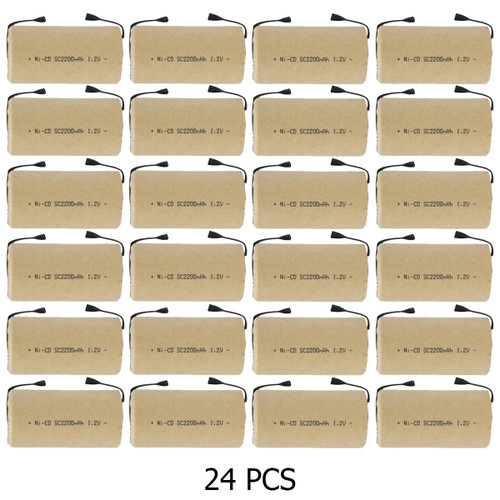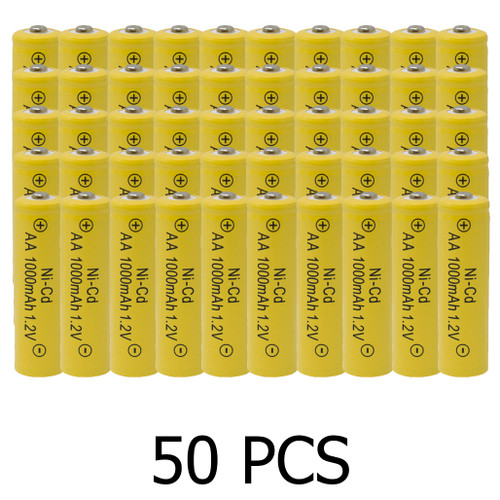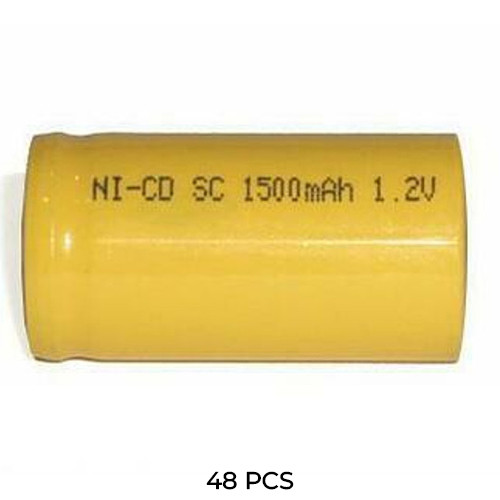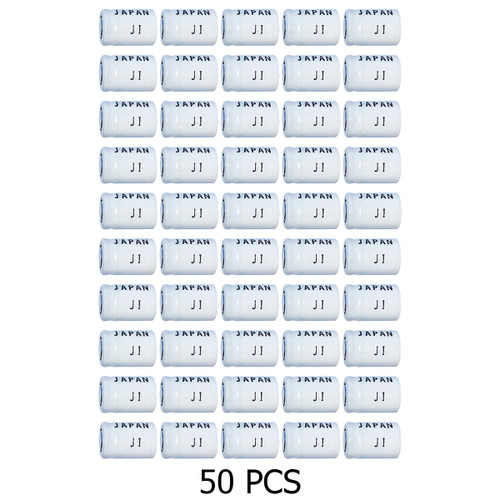
Nickel-Cadmium (NiCd) Batteries: Reliable Power with a Long History
Nickel-Cadmium (NiCd) batteries have been a trusted energy source for decades, powering countless devices across various applications. Known for their high energy density, long cycle life, and resilience in low temperatures, NiCd batteries remain a popular choice despite newer technologies entering the market.
What Are NiCd Batteries?
NiCd batteries are rechargeable batteries that use nickel oxide hydroxide as the positive electrode (cathode) and cadmium as the negative electrode (anode). An alkaline potassium hydroxide solution acts as the electrolyte, enabling the transfer of ions between electrodes during charging and discharging cycles.
These batteries are valued for their ability to deliver consistent power, even in challenging conditions, making them ideal for both consumer electronics and industrial applications.
Types of NiCd Batteries
1. AA NiCd Batteries
Specifications:
Size: Standard AA form factor
Applications: Toys, flashlights, remote controls
AA NiCd batteries are compact yet powerful, offering a high energy density suitable for devices that demand significant power in a small form factor. Their long cycle life ensures they can be recharged many times, making them a cost-effective and environmentally friendly option for everyday electronics.
2. AAA NiCd Batteries
Specifications:
Size: Smaller than AA batteries
Applications: Digital cameras, handheld games, small gadgets
AAA NiCd batteries share the same benefits as their AA counterparts but are smaller and have a lower capacity. They are perfect for devices with limited space and moderate power requirements.
3. C NiCd Batteries
Specifications:
Size: Larger than AA and AAA batteries
Applications: Portable radios, lanterns
C NiCd batteries provide greater capacity than smaller formats, making them suitable for devices that require sustained power over extended periods. Their reliable performance in low temperatures makes them a favorite among outdoor enthusiasts.
4. D NiCd Batteries
Specifications:
Size: Larger than C batteries
Applications: High-drain devices like flashlights and emergency radios
D NiCd batteries deliver even higher capacity, catering to devices with significant power demands. Their durability and performance in extreme conditions make them ideal for both emergency scenarios and outdoor activities.
5. 9 Volt NiCd Batteries
Specifications:
Size: Rectangular 9V form factor
Applications: Smoke detectors, remote controls, handheld games
9V NiCd batteries offer a compact, high-voltage power source for specialized applications. They excel in devices that require consistent voltage and reliable performance in cold environments.
Advantages of NiCd Batteries
1. Long Cycle Life
NiCd batteries can be recharged hundreds of times, offering exceptional longevity. This makes them a cost-effective option for consumers and reduces the environmental impact associated with single-use batteries.
2. High Energy Density
These batteries deliver significant power in a small package, making them suitable for compact devices without compromising performance.
3. Performance in Low Temperatures
NiCd batteries are known for their ability to function reliably in cold environments, making them ideal for outdoor applications or devices used in extreme weather.
4. Quick Charging
NiCd batteries can be recharged relatively quickly compared to other rechargeable battery types, ensuring minimal downtime for devices.
5. Robust Durability
They are less sensitive to overcharging and deep discharging than other rechargeable batteries, enhancing their reliability.
Disadvantages of NiCd Batteries
1. Memory Effect
NiCd batteries are prone to the "memory effect," a phenomenon where their capacity diminishes if they are not fully discharged before recharging. This can lead to reduced runtime and efficiency.
Solution: Regularly fully discharge the battery before recharging to minimize this effect.
2. Environmental Concerns
NiCd batteries contain cadmium, a toxic heavy metal that poses risks to both human health and the environment. Improper disposal can lead to soil and water contamination.
Solution: Dispose of NiCd batteries through designated recycling programs to prevent environmental harm.
3. Lower Energy Density Compared to Modern Alternatives
While NiCd batteries are effective, newer technologies like Nickel-Metal Hydride (NiMH) and Lithium-Ion (Li-ion) offer higher energy densities, making them more suitable for high-drain modern devices.
Best Practices for NiCd Battery Usage
Avoid Partial Charging: Fully discharge NiCd batteries before recharging to prevent the memory effect.
Store in a Cool, Dry Place: Extreme heat or moisture can degrade battery performance.
Use Compatible Chargers: Always use chargers designed for NiCd batteries to ensure safe and efficient charging.
Monitor Battery Health: Periodically check for signs of leakage or reduced performance and replace batteries as needed.
Nickel-Cadmium (NiCd) batteries have stood the test of time, offering reliable power for a wide range of devices. Their long cycle life, high energy density, and ability to perform in cold conditions make them a dependable choice for many applications. However, users must be mindful of the memory effect and the environmental impact of cadmium.
By following best practices for usage and recycling, NiCd batteries can continue to serve as a cost-effective and sustainable power solution. Whether powering toys, flashlights, or emergency devices, NiCd batteries remain a trusted energy source for consumers worldwide.


















